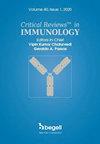TREM2 in Regulating Macrophage Inflammatory Responses and Disease Pathogenesis
IF 0.9
4区 医学
Q4 IMMUNOLOGY
引用次数: 0
Abstract
Triggering receptor expressed on myeloid cells 2 (TREM2) is a cell-surface receptor belonging to the TREM family that is predominantly expressed on myeloid cells such as granulocytes, monocytes, osteocytes, macrophages, and microglia. While much of the functionality of TREM2 is not well understood at the molecular level, it is well-established that TREM2 plays a significant role in the regulation of a broad definition of macrophage inflammatory responses. Dysregulation of TREM2 has been implicated in a large number of diseases including Alzheimer’s disease, Nasu-Hakola disease, bone-related diseases, and atherosclerosis. The TREM2 gene is highly conserved evolutionarily and at the level of controlling its expression. The function of TREM2 is highly conserved across the broad definition of macrophages, including microglia, osteoclasts, and vascular macrophages. This genetic and physiological “niche conservatism” strongly suggests its pivotal role in regulating inflammatory responses. This mini-review summarizes our current understanding of the structure, expression, and function of TREM2 in the pathogenesis of macrophage-mediated diseases.TREM2 在调节巨噬细胞炎症反应和疾病发病机制中的作用
髓系细胞上表达的触发受体 2(TREM2)是一种细胞表面受体,属于 TREM 家族,主要在粒细胞、单核细胞、骨细胞、巨噬细胞和小胶质细胞等髓系细胞上表达。虽然 TREM2 的许多功能在分子水平上还不十分清楚,但 TREM2 在调节广泛定义的巨噬细胞炎症反应中发挥着重要作用已得到证实。TREM2 的失调与许多疾病有关,包括阿尔茨海默病、纳苏-哈科拉病、骨相关疾病和动脉粥样硬化。TREM2 基因在进化和控制其表达水平方面高度保守。在包括小胶质细胞、破骨细胞和血管巨噬细胞在内的广义巨噬细胞中,TREM2 的功能高度保守。这种遗传和生理上的 "生态位保守性 "有力地表明了它在调节炎症反应中的关键作用。这篇微型综述总结了我们目前对 TREM2 在巨噬细胞介导的疾病发病机制中的结构、表达和功能的理解。
本文章由计算机程序翻译,如有差异,请以英文原文为准。
求助全文
约1分钟内获得全文
求助全文
来源期刊
CiteScore
2.60
自引率
0.00%
发文量
14
审稿时长
>12 weeks
期刊介绍:
Immunology covers a broad spectrum of investigations at the genes, molecular, cellular, organ and system levels to reveal defense mechanisms against pathogens as well as protection against tumors and autoimmune diseases. The great advances in immunology in recent years make this field one of the most dynamic and rapidly growing in medical sciences. Critical ReviewsTM in Immunology (CRI) seeks to present a balanced overview of contemporary adaptive and innate immune responses related to autoimmunity, tumor, microbe, transplantation, neuroimmunology, immune regulation and immunotherapy from basic to translational aspects in health and disease. The articles that appear in CRI are mostly obtained by invitations to active investigators. But the journal will also consider proposals from the scientific community. Interested investigators should send their inquiries to the editor before submitting a manuscript.

 求助内容:
求助内容: 应助结果提醒方式:
应助结果提醒方式:


